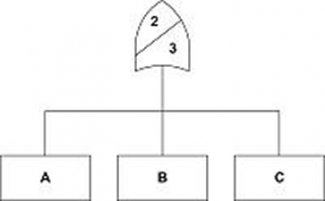Safety in Design

Price
Add to Cart
Safety in Design
This ebook provides an overview of the principles of safety in design used in the design of process and energy facilities, including chemical plants, oil refineries, offshore oil and gas platforms and pipelines. A description of some of the more important regulatory bodies and standards-setting organizations is also provided. The principles of risk management are outlined, including a discussion of the distinction between rule-based and a risk-based approaches to decision making.
Throughout this book there are many references and allusions to the concept of Process Safety Management or PSM. Virtually all process and energy facilities are required by law to have a process safety program. In the United States the OSHA Process Safety Standard is widely applied, along with the matching Risk Management Program (RMP) from the EPA and the offshore SEMS regulation. Even those companies that are not required to have a process safety program by rule will nevertheless often choose to implement such a program because it foundational to achieving safe, clean and profitable operations. The development and management of a process safety program is described in detail in another book in this series ─ Process Risk and Reliability Management (Sutton 2014).
Process safety programs are built around a series of management elements, the selection of which will vary from company to company and agency to agency. But they are all broadly similar ― they are, in effect, dialects of the same language. The elements are integrated with one another to form one, cohesive program. The Table (CCPS 2016a) provides a representative list of such elements.
Elements of a Process Safety Management Program
- Process Safety Culture
- Compliance
- Competence
- Workforce Involvement
- Stakeholder Outreach
- Knowledge Management
- Hazard Identification and Risk Management
- Operating Procedures
- Safe Work Practices
- Asset Integrity / Reliability
- Contractor Management
- Training / Performance
- Management of Change
- Operational Readiness
- Conduct of Operations
- Emergency Management
- Incident Investigation
- Measurement and Metrics
- Auditing
- Management Review
Many of the programs and activities described in this book will be managed within a facility’s process safety program. For example, most maintenance work (Chapter 9) will fall under Element #10: Asset Integrity/Reliability.
Risk Management
There are two broad strategies to managing safety and risk. The first is rule-based and prescriptive — it is the approach used in most regulations and standards. An alternative approach is to use a risk-based methodology. Rules are such as OSHA’s PSM, BSEE’s SEMS and the EPA’s RMP are all fundamentally risk based, although they do also include many prescriptive elements. Programs such as Risk-Based Inspection are, as their name indicates, also grounded in an understanding and assessment of risk.
Process Risk and Reliability Management describes the analysis and management of risk in detail. For the purposes of this book it is sufficient to say that risk consists of three components:
- A hazard such as a leak from a storage tank;
- The consequences (safety, environmental, economic) of that hazard should it take place; and
- The likelihood of occurrence of the hazard.
These elements work together as shown in Equation (1).
RiskHazard = Consequencen * Predicted Frequency..................................... (1)
It can be seen that risk can never be zero — a truth not always grasped by members of the general public or the news media. Hazards are always present within all industrial facilities. Those hazards always have undesirable consequences, and the likelihood of their occurrence is always finite.
The exponent ‘n’ on the consequence term is used to demonstrate that rare/high consequence events have a greater impact than frequent/low consequence events. Risk is subjective.
In general, the best way to reduce risk is to remove the hazard, either by eliminating the item that is causing the risk or to remove persons from the scene of potential incidents. These approaches are summarized in the aphorisms, “If a tank’s not there, it can’t leak” and “If a man’s not there, he can’t be killed”. If the hazard cannot be removed, the next best step is usually to reduce the consequence of the event. If that cannot be done then the likelihood or predicted frequency should be reduced.
These actions can be supplemented and complemented by the addition of safeguards such as safety instrumentation or personal protective equipment (PPE) for the workers, and improved administrative measures such as better operating procedures and training.
Table of Contents
Introduction
Standard Examples
Terminology
Regulations, Standards and Guidance
Regulatory Agencies (United States)
Regulations (International)
Industry Standards
HSE
Process Safety Management
Risk Management
Units of Measurement
SI Units
Date Format
Engineering Drawings
Block Diagrams
Process Flow Diagrams
Piping and Instrument Diagrams
Symbols
Equipment Numbering
Spec Breaks
Isometric Drawings
Electrical Single-Line Diagrams
Materials of Construction
Flammable and Combustible Materials
Fire Triangle
Flammable Range
Flash Point
Flammable / Combustible Liquids
Class I Liquids
Class II Liquids
Class III Liquids
Ignition Sources
Lightning
Area Classification
IEC Code
Regulations and Standards
Temperature Code
Classification Plan
Fireproofing Insulation
Fireproofing Materials
Cryogenic Systems
Maintenance
